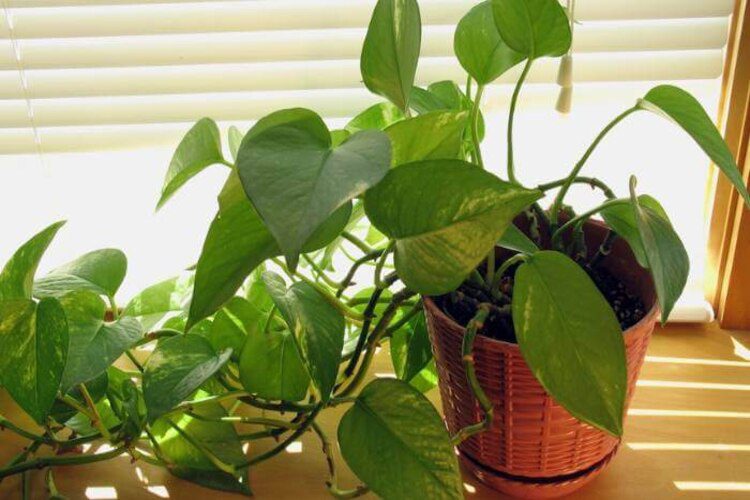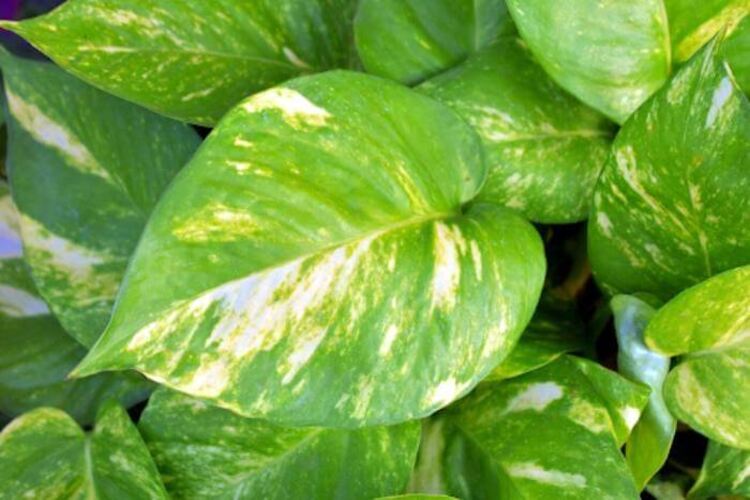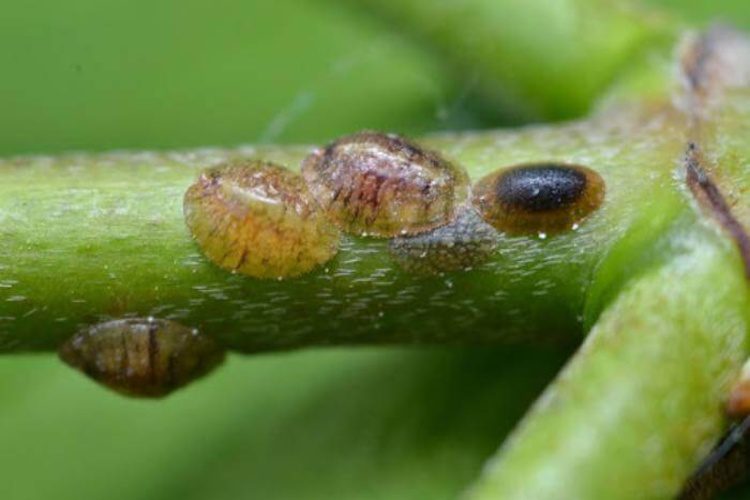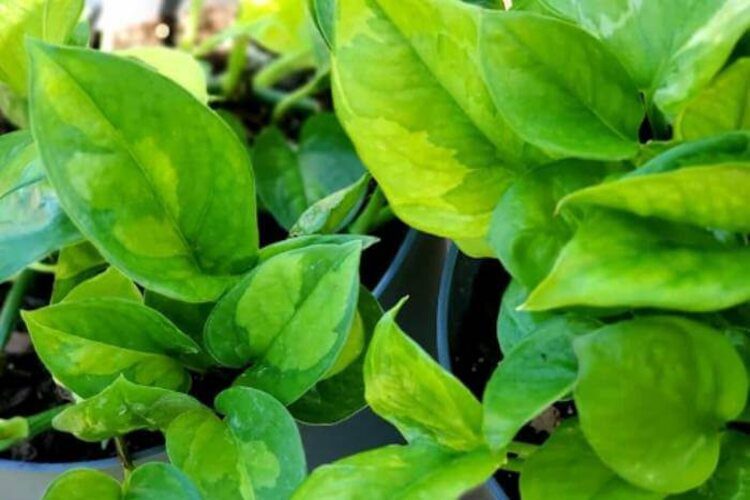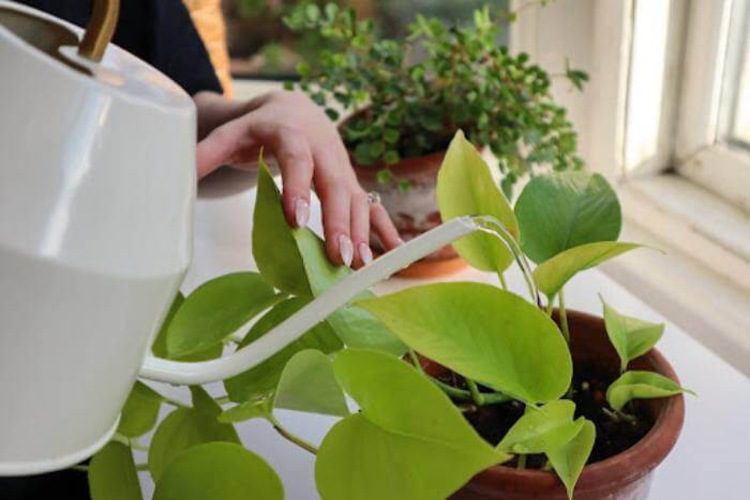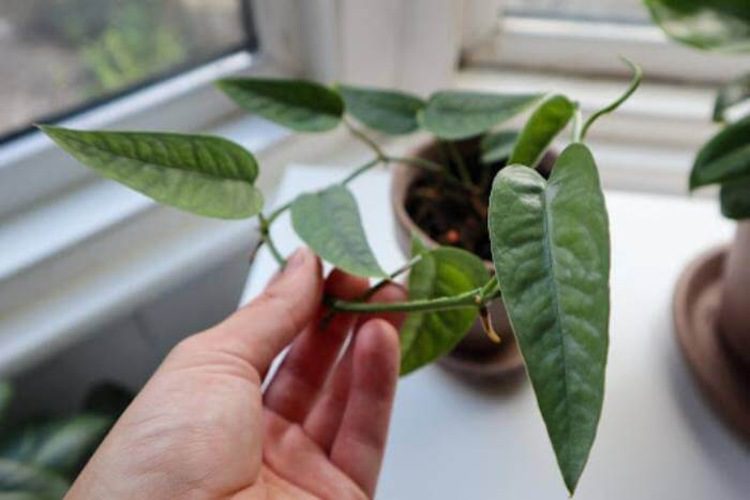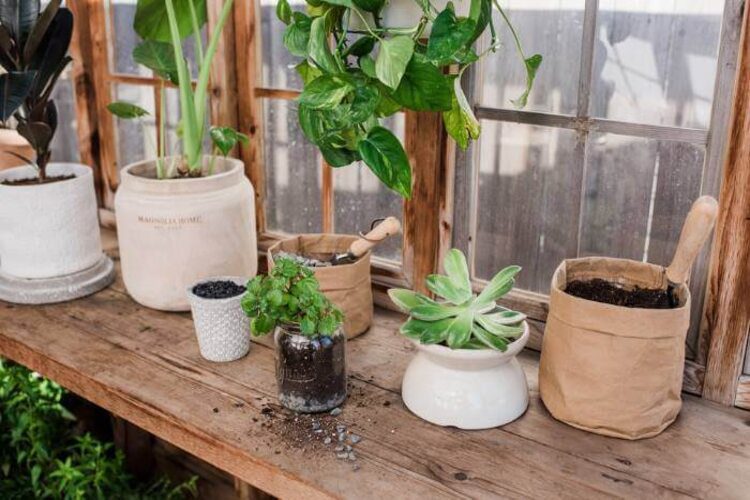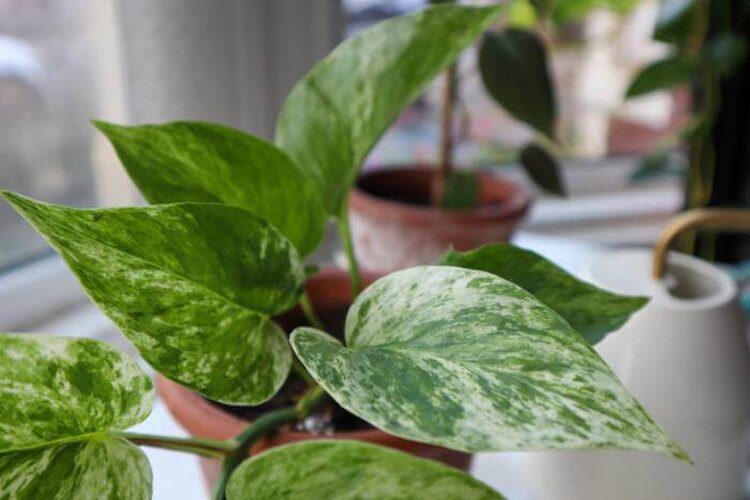Pothos Leaves Turning Brown: 6 Ways To Save Your Plant
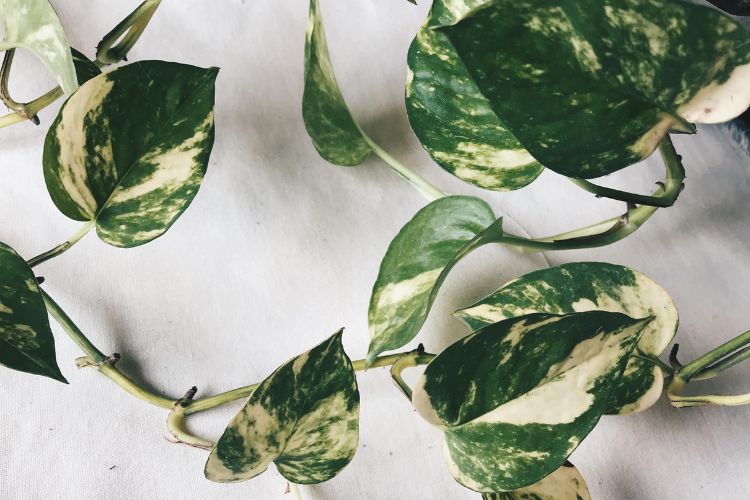
During the development process of Pothos, you might notice some noticeable problems. One of them is the browning of leaves. Once you detect it, you must try to find suitable solutions to fix it as soon as possible. So, what does this sign look like, what causes it, and how can we solve it? Let’s explore now.
What Does Leaves Turning Brown Look Like?
The name indicates it. You won’t see the natural green hue on your pothos leaves anymore because they are changing into ugly brown leaves. Besides, there are a few additional signs to watch out for before the leaves go brown.
The first sign is that a Pothos leaf turns yellow in the center or at the tip. You can see that the yellow leaves look dryer or that the entire plant seems to droop.
There are many reasons why these issues occur. Each cause will lead to different signs on the leaves. We will discuss every one of them in this post. No matter what the case is, you should first remove the affected leaves. Otherwise, they will affect the whole plant.
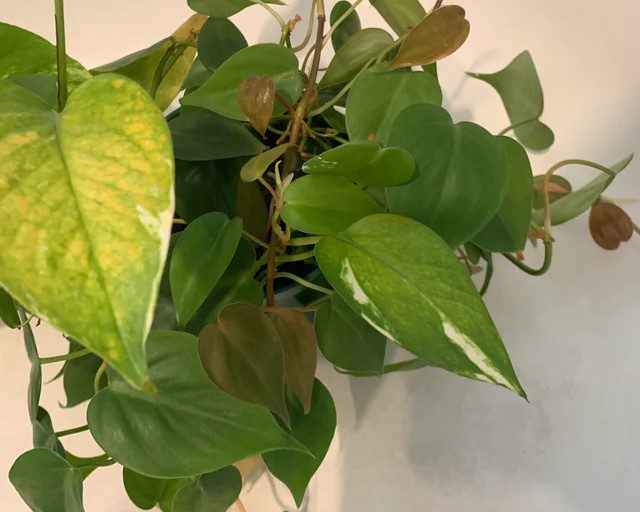
Pothos Leaves Turning Brown – Causes And How To Fix
External conditions will be the first thing to blame. Hence, you must first address the exact cause and choose the appropriate solution for your case.
Water
Many new growers can’t plan a proper watering schedule for their plants. As a result, overwatering and underwatering are the most common mistakes, bringing a lot of trouble to Pothos. Leaves turning brown is known as one of the most common consequences.
Overwatering
Pothos flourish in warm, dry environments. It means that the main reason for pothos leaves to turn brown or worse is black leaves are overwatering the plant.
- Signs: You will see brown leaf tips first. The leaf’s center has also developed some large brown spots.
- Solutions: Allow the potting soil to dry out completely. Then, water your plant gently and avoid giving it too much water. It would be best to check if the top one or two inches of soil feels dry until the next watering.
Underwatering
The plant’s cells may constrict if there is not enough water. Your plant will get smaller and finally die if the drought lasts for days. The lifeless brown leaves are also a sign of underwatering.
- Signs: A pothos plant without enough water looks withered and has brown spots. Dehydration will even make your plant thinner and smaller.
- Solutions: We advise bottom watering to give your Pothos a good shower if you have underwatered it. But this method only works if the pot has holes in the bottom. The best tip to avoid watering issues for your Pothos is to give it regular and sufficient watering. Hence, keep track of the timeline that your plant seems fine with and make an effort to stick with it.
Because pothos plants are resilient, they don’t require a lot of special care. However regular irrigation will minimize the possibility of brown spots forming on the leaves.
Your plant will be satisfied if you water it according to a routine and in the proper amount. This method entails watering it until the water can flow through the drainage holes of the pot. The exact timetable for your plant will vary, but weekly watering is often enough.
During the first few weeks, check the soil, and if it’s still wet after a week, allow it more days to dry.
Light
Pothos can endure brief, mild exposure to the sun. It needs three to four hours of gentle morning light to thrive. Nevertheless, intense, direct sunlight will scorch its leaves, leaving them with brown edges and leaves curling.
- Signs: When exposed continuously to direct sunlight, the leaf starts to form large brown spots. It may turn entirely brown soon.
- Solutions: Once your Pothos leaves turn brown, moving the plant to a less lit area is the simple solution to this issue. The side of a window that faces south is the ideal place. You can also put your Pothos near a west or east window.
If there isn’t a good location with the proper kind of lighting, artificial settings will solve your problem. You can put your plant in a room with artificial lighting, but please note that too little light is not a good idea.
Pothos dislikes direct light, yet it still requires light energy to survive. Pothos’ growth will be fragile, and its stems will become twisted and brittle in the absence of sunshine.
Infestation
An infection is one of the most frequent reasons for browning Pothos leaves. Each type of infection has different signs and calls for specific solutions.
- Fungal diseases: The pothos’ leaves are ideal places for the fungal spores to land and start to grow. They will cover the leaf in brown spots and cause it to partially or entirely leaves turn white or yellow. Act quickly to eliminate all the brown leaves and prevent the illness from spreading. Then apply fungicide to your plant.
- Bacterial leaf spot: Large brown spots on the leaves are the major indicator of bacterial leaf spots. It will progress quickly and stop at the leaf’s veins. When your Pothos leaves turn brown, give your plant adequate air circulation, proper humidity, and frequent fungicide treatments. Choose fungicides with copper hydroxide for the best effect.
- Southern blight: Southern blight first affects the plant’s base, making its stems and leaves completely brown. To cure the infection, remove the diseased parts and wash the wounds with fungicide. Then, plant pothos in loose, clean soil.
- Root rot: Root rot is a common disease in houseplants that can be caused by overwatering, poor drainage, or too deep soil. To cure root rot, repot your pothos in clean soil in a new pot. Remove any mushy roots and let the healthy roots dry out.
Over-fertilizer
Brown leaves might be a sign of poor fertilization. It generally implies that you are applying too much fertilizer.
- Signs: The leaf tips and margin turn brown first, followed by other parts of the leaf. Other signs are yellow leaves and weaker stems.
- Solutions: Once you notice the brown leaf tips, take immediate action to solve them. Start by washing the fertilizers in the pot. Then, bring your plant outside, water it, and take the roots out to let them dry out. Alternatively, you can replace the soil. Remove the plant from the pot and gently wipe off the old soil from its roots to avoid damaging them. Now, you can plant your Pothos in new soil.
Also, do not overfeed your plant. Pothos plants need fertilization every four to eight weeks during their growing season. Do not give your plant too much food every time you feed it. Fertilizing 10-10-10 NPK is ideal for this species. Also, avoid the fall and winter to feed it because it’s dormant during these months.
Other causes
Humidity, temperature, and the pot can also cause brown leaves on your pothos plant.
- Humidity: The Pothos need a humidity range of 50% to 70% to thrive. If your plant’s leaves are yellowing, wilting, and drooping, or if they turn brown, you may determine it wants more humidity. You may put your Pothos next to a plant humidifier or on a pebble tray if you believe it’s not getting enough humidity.
- Temperature shock: If there are sudden changes in the surrounding temperature, you will notice your Pothos leaves colours changing. It often happens when you take the plant outside during hot summer days when it’s hot at noon and chilly at night. Maintaining it at a regular temperature is preferable to preventing this problem. The optimal temperature for Pothos is 75 to 85 °F. Slight fluctuations within the range won’t harm your plant.
- Small pot: The pot may be too small for your plant. When the roots exceed the pot size, they may stick out the potholes. As a result, they won’t receive sufficient nutrition and will turn weak. You will also notice brown leaves on the plant. The best solution in this case is to repot your plant. This common treatment ensures that your Pothos always has the right pot size to thrive in.
How To Improve Pothos Conditions?
Pothos is a hardy species. However, it doesn’t mean that the plant won’t need care.
Please keep these tips to avoid pothos leaves turning brown and ensure optimal growth for your houseplant.
Provide enough indirect light
To prevent your Pothos leaves from turning brown, move them to a location where they can receive the optimum amount of bright indirect light. If you place it next to a window, hang a sheer curtain to reduce the amount of direct sunlight it gets. Alternatively, relocate it to a different area that still obtains adequate natural light.
Snip dead leaves or diseased roots
A part of your plant getting damaged doesn’t imply that you have to quit the whole plant. Instead, snip the diseased roots or leaves to avoid infection for other parts. Your plant can still revive with proper care.
Treat pothos fungal diseases
The application of a fungicide containing Dimethomorph is a fantastic do-it-yourself solution to eliminate the brown spots on pothos stems and leaves. But if you don’t have experience treating fungal diseases, contact professionals for accurate diagnosis and proper treatment.
Withdraw of water application
Do not add any water when there is too much water and your pothos roots are sinking. Expose the soil to direct sunlight to let it dry. Evaporation may proceed more quickly as a result.
Change the soil
Pothos is not picky when it comes to soil. Your plant likes soil with a pH between 6.0 and 6.5. You should use a potting mix of superior quality that drains well. Most soil mixture from a nursery suffices. And if yours cannot perform that effectively, change it to benefit your plant.
Make sure the soil is not too compact since it might make it difficult for the water to drain out. Pothos likes moist but not soggy soil because it can suffocate your roots and cause root rot. If the soil doesn’t drain well, add one part of the perlite with two parts of the potting soil. When you pot, do not pack the mixture too tightly since it will impede drainage.
Repot
Repotting is the most common and effective solution to address overwatering problems. After checking the roots for disease and sogginess, remove your plant from its original pot to a better one.
You need to leave your plant bare-root overnight before repotting it into a new pot and potting soil in the morning. This tip will fix overwatering issues properly.
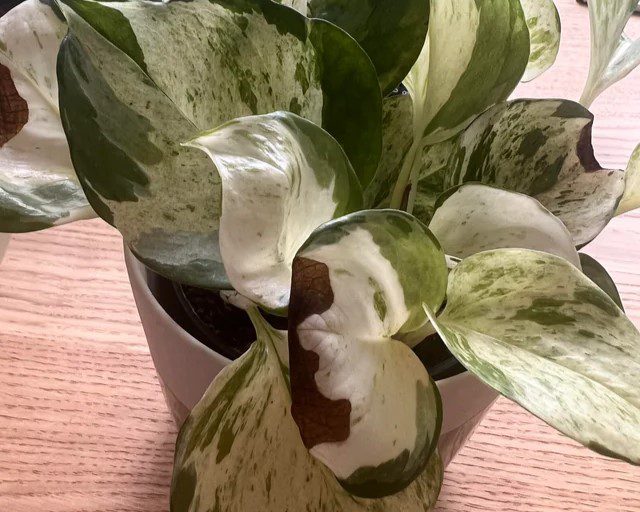
FAQs


